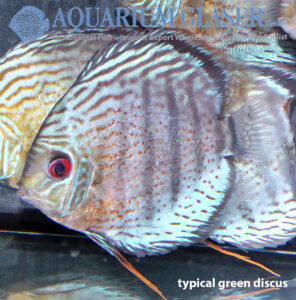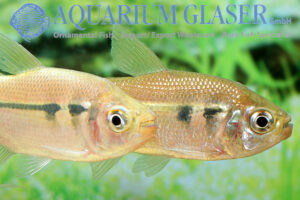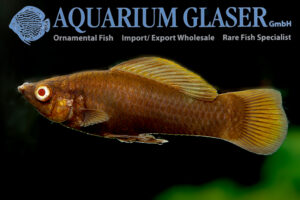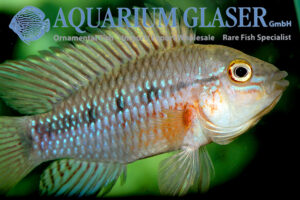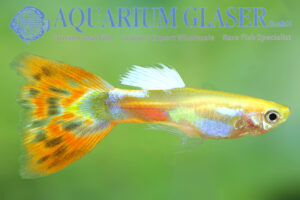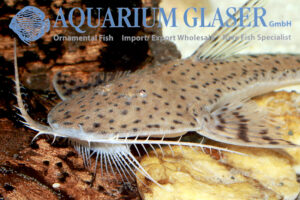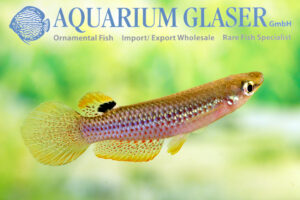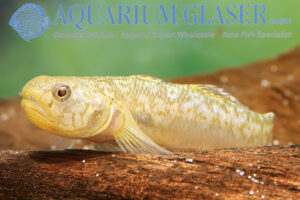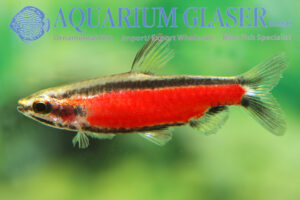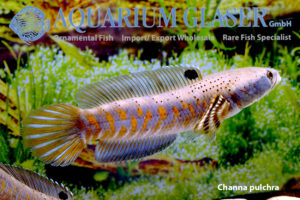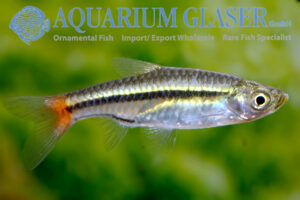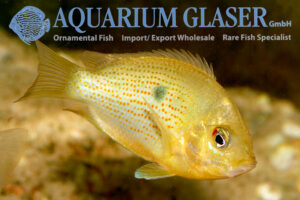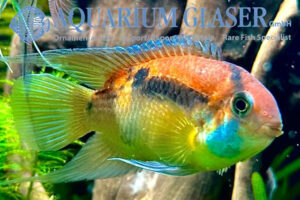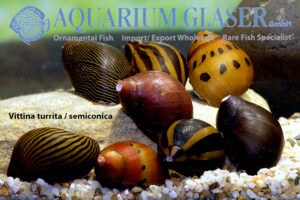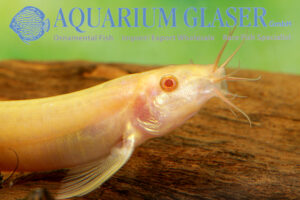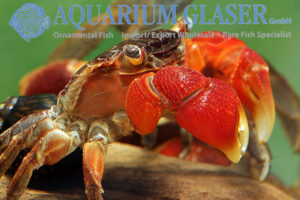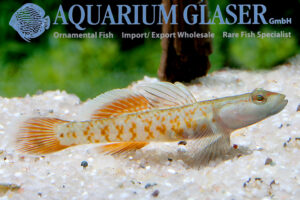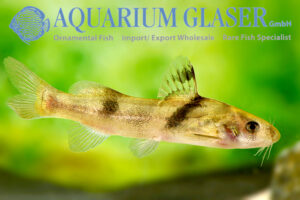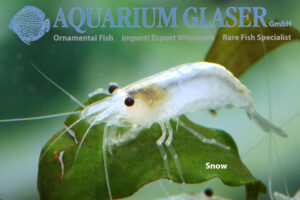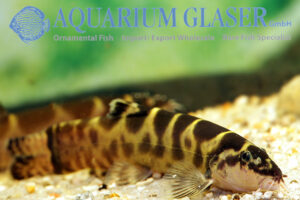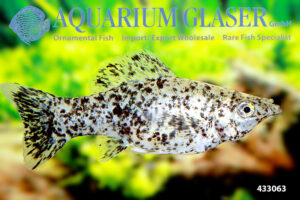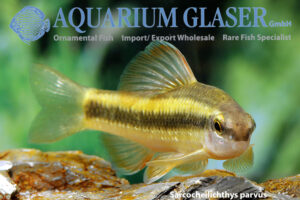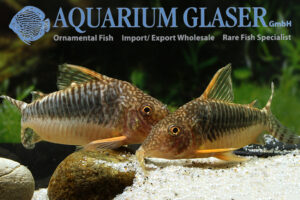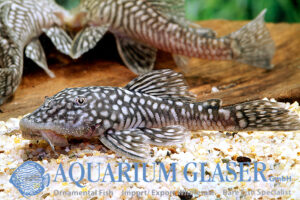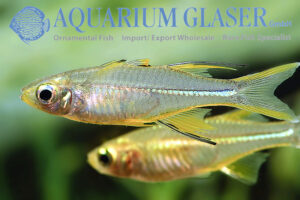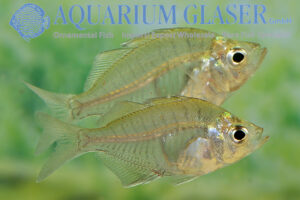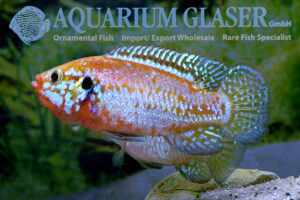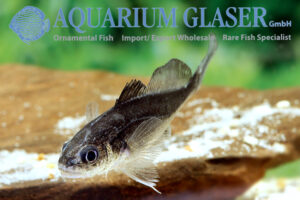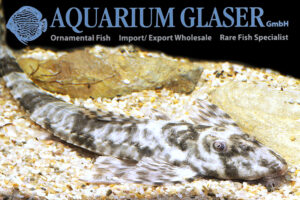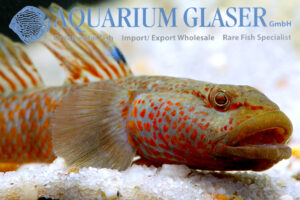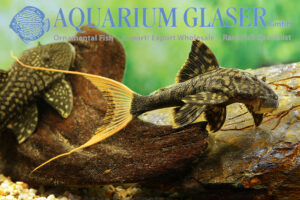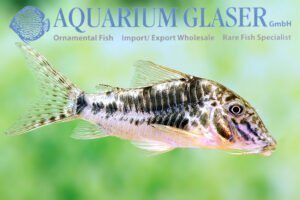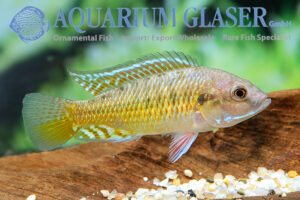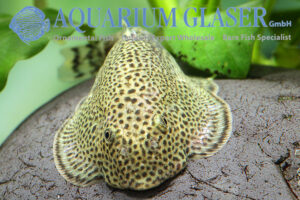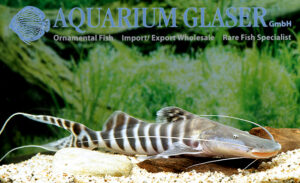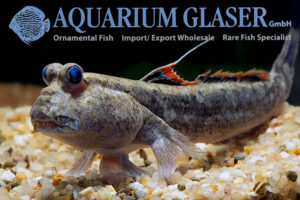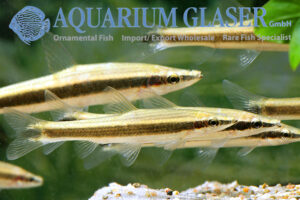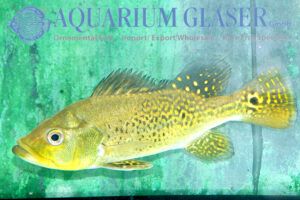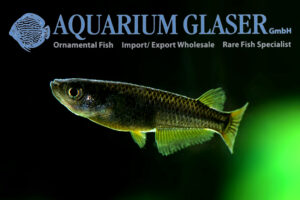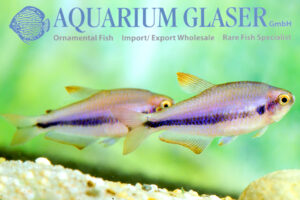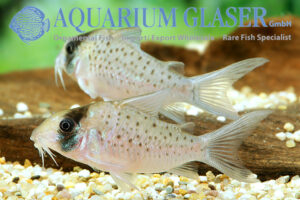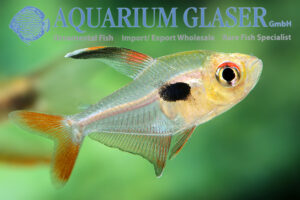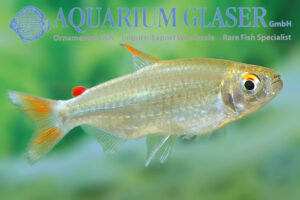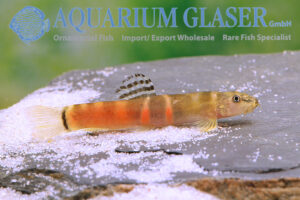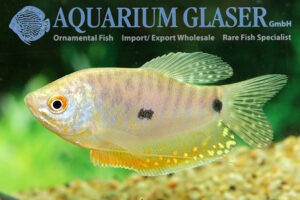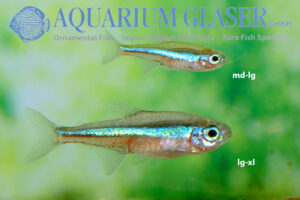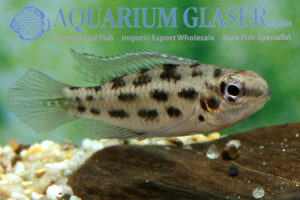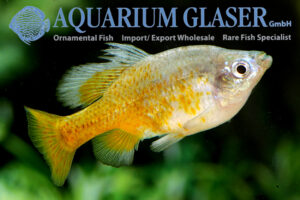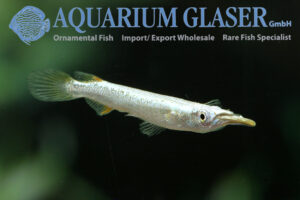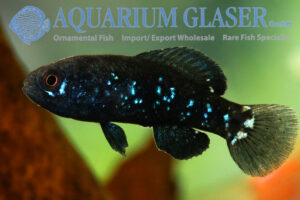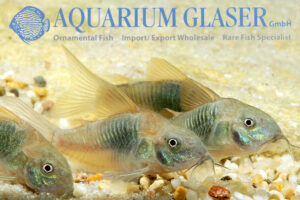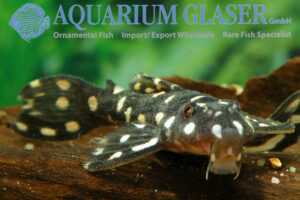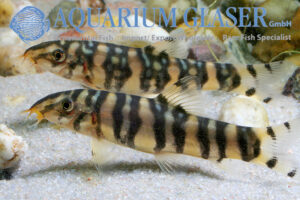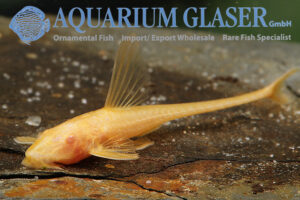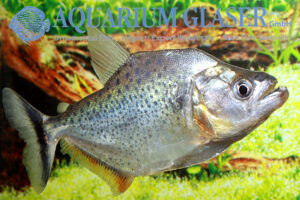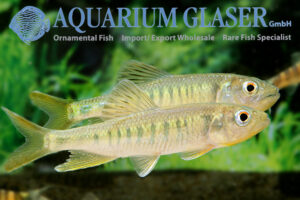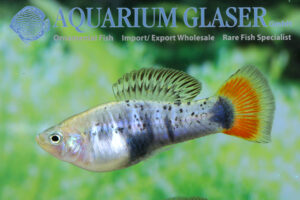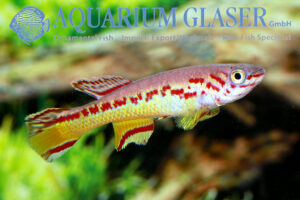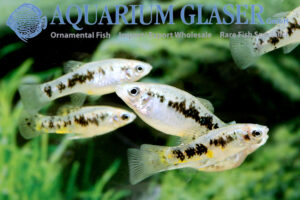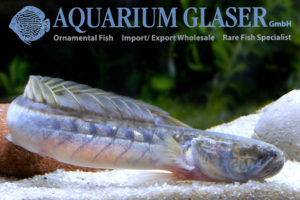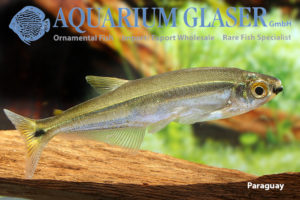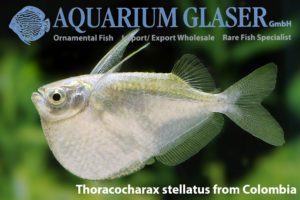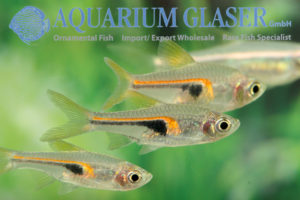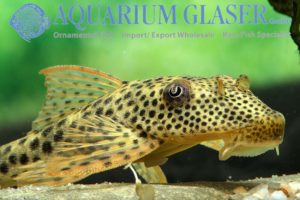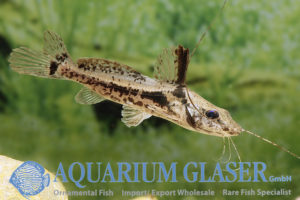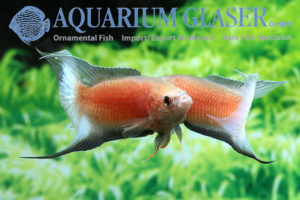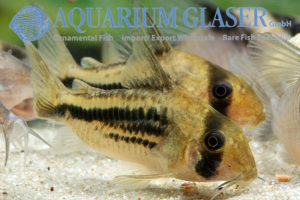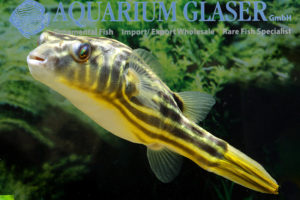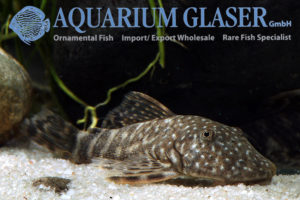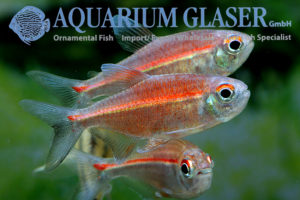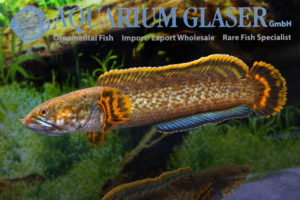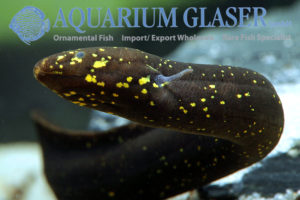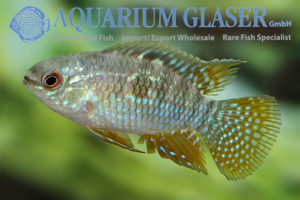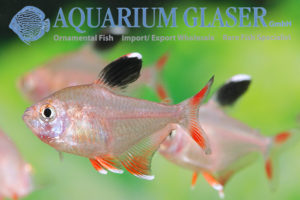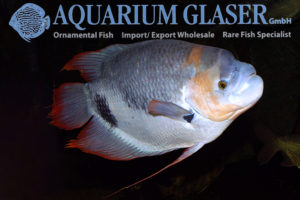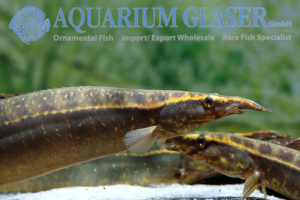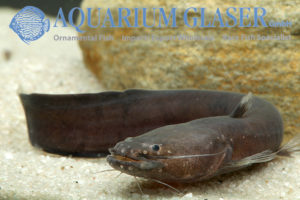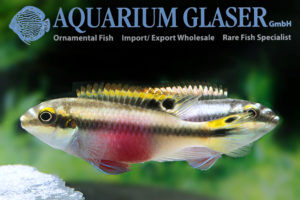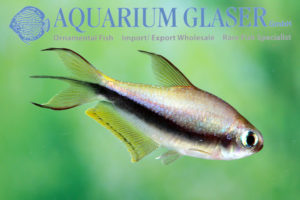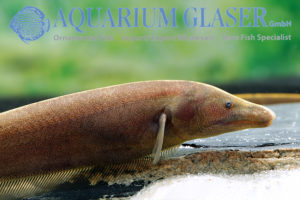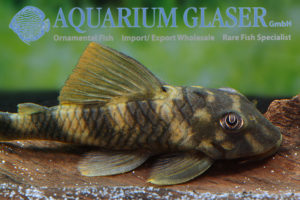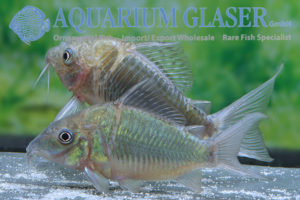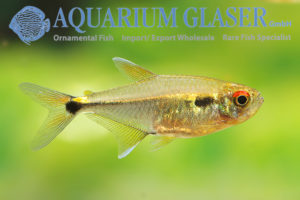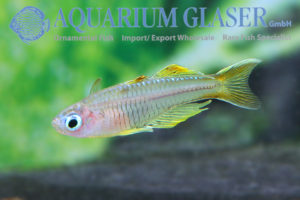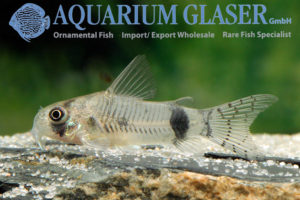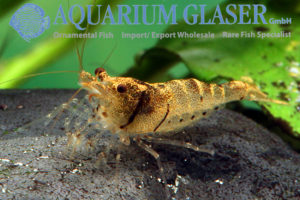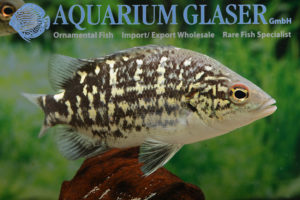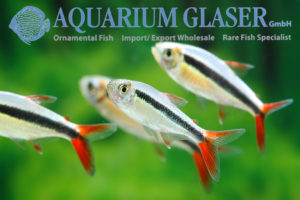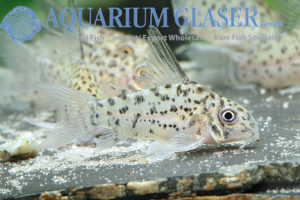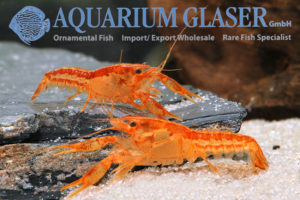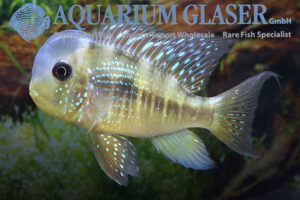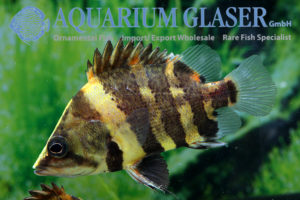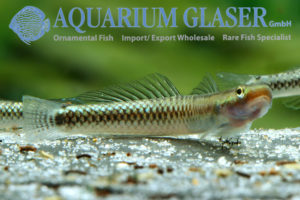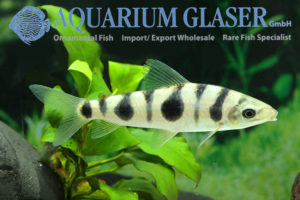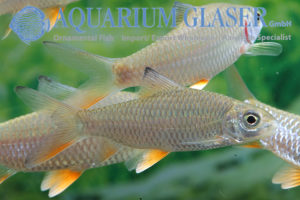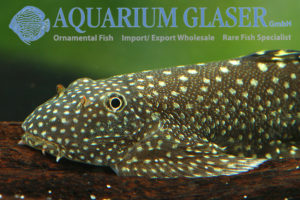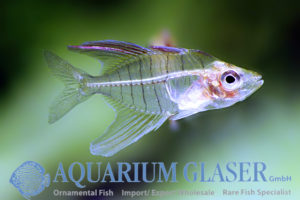The question of which scientific species names should be given to the various discus cichlids is a controversial one. There is agreement that all Symphysodon populations are relatively closely related to each other and that preserved specimens cannot be identified with certainty without color and location; the only exception is the Heckel discus (Symphysodon discus), […]
Fish Archive (3128)
-
-
Jupiaba anteroides
For a variety of reasons, aquariums were predominantly small until the 1960s and held 10-100 liters of water. Accordingly, aquarists focused on small fish. It was only when the cichlids of Lake Malawi were imported that the trend changed. These “coral fish of freshwater” need large tanks due to their high intraspecific aggressiveness and soon […]
-
Poecilia “Chocolate”
Perhaps the most unusual of all Molly breeding forms is Chocolate. This is because it is a dark-colored albino! At first, this sounds like an absolute contradiction in terms, like a “round corner” or the “black mold”. But it’s still true. In the chocolate molly, the red eyes of the albino meet a chocolate-colored body. […]
-
Temporarily closed
Dear fish friends, we are currently rebuilding something and therefore there will be no newsletters for a short time. We will hurry, we promise! Best regards The Aquarium Glaser team
-
Apistogramma sp. Nanay
The species characteristics of this dwarf cichlid from Peru are: distinct underbelly stripes, an orange “axillary spot” (the attachment point of the pectoral fin is intensely orange in color), a more or less distinct orange zone on the belly and a tail fin that is tipped at the top and bottom in old, fully developed […]
-
Guppy Multicolor
Who can keep track of the many, many breeding forms of livebearing toothcarps? Aquarists interested in guppy genetics know that there are thousands of possible color and fin combinations in these animals. Many of these (by no means all) can be bred in pure lines, given the appropriate ambition and perseverance. Can you blame the […]
-
Planiloricaria cryptodon
Currently we have wonderful flounder whiptail catfish from Peru in stock. They are currently 10-13 cm long. These sizes give only the body length, as in Planiloricaria there is a filament on the upper lobe of the caudal fin that is as long as the body! Maximum length given in literature is 35 cm. Nevertheless, […]
-
Aplocheilus armatus
New times bring new methods, new methods bring new findings. Who knows, perhaps Jack the Ripper would have been caught if the criminal techniques of fingerprint and DNA analysis had been available in 1888 when he committed his murders. Even before Jack the Ripper’s time, the many, many local forms of the common panchax (Aplocheilus […]
-
Mugilogobius myxodermus
Small freshwater gobies have recently attracted the attention of more and more scientists and, as a result, new species are constantly being discovered and old, almost forgotten species rediscovered. The genus Mugilogobius currently comprises around 30 species. It is not possible to be more precise because individual species are placed in different genera by different […]
-
Nannostomus sp. Cenepa Super Red
Recently we could present you a magnificent, deep red new pencil fish (see https://www.aquariumglaser.de/en/fish-archives/nannostomus-sp-super-red-2/). Thereby we mentioned a second species, the “Cenepa Super Red”, which we unfortunately only knew from internet pictures at that time. We now manage to import these magnificent animals on a regular basis. The “Cenepa Super Red” differs from the “Super […]
-
Channa pulchra
Sometimes supposedly small details are decisive, for example when it comes to species differences. There are two species of snakehead (Channa) that occur geographically close to each other in Burma (Rakhine State): Channa pulchra and Channa ornatipinnis. Both look quite similar and grow to a similar size (20-25 cm), but they differ considerably in their […]
-
Rasbora borapetensis
The blackline rasbora is a well-known aquarium fish that has been delighting ornamental fish enthusiasts since 1954. This completely peaceful schooling fish is ideal for enlivening the middle and upper water layers. Rasbora borapetensis, whose species name was chosen after the place where it was first found (the 220 km2 Bung Borapet swamp in Thailand), […]
-
Pseudetroplus maculatus (formerly: Etroplus maculatus)
The orange chromide, Pseudetroplus maculatus, is a well-known aquarium fish and has not disappeared from the tanks of enthusiasts since it was first introduced. Recent studies indicate that the three species of cichlids from India (Pseudetroplus and Etroplus) are not so closely related to the cichlids (Cichlidae), but rather to the damselfishes (Pomacentridae). However, this […]
-
Cleithracara maronii KOUROU
The Keyhole cichlid (Cleithracara maronii, formerly Aequidens maronii) is a well-known aquarium fish that has only rarely been imported to Europe as a wild catch since its first import in 1936. The demand is covered by captive breeding. Although the species has no striking colors – the very varied pattern consists of brown, grey, beige […]
-
Vittina turrita and V. semiconica
The nerites (Neritidae), also known as racing snails, are very popular. Their beautiful coloration is one of the reasons for this, but also their excellent properties as algae cleaners, which (if you keep enough specimens) reliably keep the aquarium glass clean. Plants, on the other hand, are left completely alone. And there is no unwanted […]
-
Misgurnus anguillicaudatus GOLD
The albino breeding form of a weather loach (Misgurnus) originating from subtropical Asia is currently enjoying a constant increase in popularity. We call it Misgurnus anguillicaudatus, but this is only a makeshift name, as the correct species names of the Asian Misgurnus species cannot currently be determined. The albino weather loach reaches a length of […]
-
Manarma moeschii ( = Pseudosesarma moeschii)
The red mangrove crab or red Thai crab is by far the most popular crab for paludaria (combined aquaria and terraria). What is not yet widely known is that it was placed in a different genus – Manarma – in 2020. In the hobby, the species name is also traditionally misspelled. The correct name is […]
-
Rhinogobius zhoui
This freshwater goby, which attains a maximum length of 4-5 cm, is one of the most attractive discoveries of ornamental fish of the last years. However, in the beginning the fish were extremely expensive. Currently we can offer them for a comparably moderate price. Rhinogobius zhoui originates from China. In the natural habitat – brooks […]
-
Batasio fasciolatus
For the first time ever we obtained a species of Batasio from North Bengal in India. They belong to the species Batasio fasciolatus, which was described scientifically only in 2006. One can see that the determination of species of Batasio is not that easy keeping in mind that B. fasciolatus was already subject of an […]
-
Caridina multidentata Orange and Snow
The Amano shrimp, Caridina multidentata (formerly: C. japonica) is the most popular of all aquarium shrimps. However, it is only available seasonally from wild collections. However, as there is a year-round demand, the species is bred on a large scale. For German offspring, see here: https://www.aquariumglaser.de/en/31-crayfishes-shrimps-crabs-snails-mussels/amano-shrimp-now-also-available-as-german-offspring/ When animals are bred, sooner or later color or […]
-
Leptobotia tchangi
The loaches of the genus Leptobotia differ from all other botiide loaches in that the razor-sharp, sickle-shaped spine under the eye, which all botiide loaches can erect and lock in the event of a perceived or real threat, is only single-pointed. In Botia & Co. it is usually two-pointed. At present, around 20 species are […]
-
Dalmatian, Marble and Calico mollies
At least three species of mollies are the source species of the numerous breeding forms of these fish that exist today: Poecilia sphenops, P. latipinna and P. velifera. P. mexicana may also have been involved, but this is unclear as this species was long regarded as a synonym of P. sphenops. The scientific differentiation of […]
-
Sarcocheilichthys parvus
The genus Sarcocheilichthys from China has the potential to become a new star in the ornamental fish sky. There is a complex of small (6-7 cm) species within the genus in southern China, which are characterized by a broad longitudinal band. The males of all three species develop very pretty vermilion fins at spawning time. […]
-
Corydoras seussi
In the huge variety of species of Corydoras, four species stand out in particular due to their bright orange pectoral and dorsal fin spines: Corydoras sterbai, the associated long-snouted C. haraldschultzi, C. gossei and its long-snouted counterpart C. seussi. We aquarists are naturally delighted by this sight, but we should not forget that these are […]
-
Pseudancistrus genisetiger
This beautiful loricariid catfish was already scientifically described in 1941. The type locality is the drainage of the Rio Jaguaribe in the Brazilian state of Ceará in the north-east of the country. The maximum length published to date is around 13 cm (10 cm without caudal fin). The Rio Jaguaribe is notorious for its erratic […]
-
Marosatherina ladigesi
The Celebes Rainbow, Marosatherina ladigesi, is perhaps still remembered by some readers as Telmatherina ladigesi. The species lives endemically (i.e. – seen worldwide – exclusively there) in cool karst streams in the area around Bantimurung, Maros karst, Sulawesi Selatan; Sulawesi belongs politically to Indonesia, but zoogeographically to the Australian region. In former times the big […]
-
Parambassis siamensis
Formerly this species of glass perch was the most common found in the trade. It has a very wide distribution through Thailand, Vietnam, Cambodia, and Laos. However, Parambassis siamensis was most often mis-identified and traded under the name “Chanda wolffii”. P. siamensis is very similar to the Indian species P. ranga. Both are distinguished by […]
-
Rubricatochromis sp. Neon
If aquaristics were exclusively about colors, there would hardly be any need for species other than Rubricatochromis. The “Neon” is probably a breeding form created by crossing and selection, in which the blue iridescent spots, which most red jewel cichlids have, are combined to form larger areas. In terms of body shape, Hemichromis sp. Neon […]
-
Boesemania microlepis
The drums (Sciaenidae), to which Boesemania microlepis belongs, are mainly known from the sea. Only a few of the approximately 300 species live permanently or occasionally in freshwater. These fish are known as “drums” because they make a very audible sound. Larger schools of these fish have already triggered submarine alarms because they cast a […]
-
Spatuloricaria sp. „Black-White Peru“
The genus Spatuloricaria comprises currently 13 accepted species. Members of this genus are large, splendid whiptail cats. There is probably no species that stays smaller than 30 cm in length, some become definitely larger. This means that the fish have to be kept in large aquaria. Spatuloricaria are sensitive against poor water quality. Thus a […]
-
Rhinogobius shennongensis (2)
The brook gobies (Rhinogobius) are as adult fishes pure freshwater inhabitants, which are found at most once in the brackish water of the lower reaches of running waters; but even this is the exception, not the rule. With 140 described species, 72 of which are generally considered valid, there is still a wide open field […]
-
L90a Panaque bathyphilus
The large, wood-eating Panaque species have their loyal fans. Although these animals only reach us in relatively small numbers, they have been on offer from exporters for decades. This includes L90, the variably colored Panaque bathyphilus from Peru, which can easily reach a body length of 60 cm in old age. We have reported on […]
-
Corydoras sarareensis ( = C23)
It has been almost 20 years since we were able to offer this beautiful armored catfish from Brazil. Corydoras sarareensis, which was given its species name after the Rio Sarare from which it originates, was only scientifically described in 1995. Prior to this, the species was known as “C23” in the hobby. The Rio Sarare […]
-
Pseudocrenilabrus sp. Ruaha
The small mouthbrooders of the genus Pseudocrenilabrus have been kept and bred in the aquarium since the beginning of modern aquaristics – in the 1880s. The species P. multicolor was once so popular that it was simply called “the mouthbrooder“, although it was already known at the time that there were hundreds of species of […]
-
Beaufortia kweichowensis
The name for this hillstream loach may be new to you, but you know the animal. In fact, Beaufortia kweichowensis is or was the most common hillstream loach in the trade and was traded as “China Pleco”, “Chinese Butterfly Sucker” or “Butterfly loach”, with the scientific name usually being Beaufortia leveretti. Beaufortia leveretti really does […]
-
Brachyplatystoma tigrinum (formerly: Merodontotus tigrinus)
It’s hard to believe, but this striking and large catfish – the species reaches a final length of approx. 85 cm – which is also widely distributed in Amazonia (Ecuador, Peru, Colombia, Bolivia, Brazil) was only discovered in 1981! It was described in the genus Merodontotus, which was created especially for it, but is now […]
-
Periophthalmodon septemradiatus
Within the true mudskippers – these are the species that actively leave the water and search for food on land, etc. – there are two genera: Periophthalmus (19 species) and Periophthalmodon (3 species). They do not differ externally, only in the structure of their teeth. We have now received Periophthalmodon septemradiatus from India, a beautiful […]
-
Pseudorasbora elongata
The genus Pseudorasbora comprises only five accepted species. Representatives of the genus can be easily recognized by the upwardly directed mouth fissure, a characteristic that is rare within the carp fish (Cyprinidae). Pseudorasbora is originally distributed in East Asia (China, Russia, Japan). One species, P. parva, was unintentionally introduced in the 1970s with food fish […]
-
Cichla kelberi “Spider”
Just a few decades ago, the Peacock Basses from South America (genus: Cichla) were considered almost unsustainable for aquaria, but nowadays they are bred regularly and in large numbers. The latest craze is Cichla kelberi “Spider”, a breeding form whose origin is not yet known. The photos show our current stock, 16-18 cm long specimens, […]
-
Oryzias latipes “Medaka Black”
The small rice fish Oryzias latipes was domesticated by humans at an early stage and was one of the very first exotic fish species to arrive in Germany before the turn of the 19th and 20th centuries. It became the pet of geneticists, so to speak – especially in Japan – who conducted and still […]
-
Inpaichthys sp. “Red Eye”
It’s amazing how many new and extraordinarily beautiful tetra species have appeared in recent years. Among them is an Inpaichthys species that has not yet been scientifically recognized and is referred to as the “Red Eye” by those who catch it. The I. sp. “Red Eye” differs from the well-known king tetra (I. kerri) not […]
-
Corydoras sychri
The beautiful Corydoras sychri from Peru – it lives in the Rio Nanay – is unfortunately only occasionally available. We currently have very nice, large specimens in stock. There are some species that can be confused with C. sychri. The best known is C. atropersonatus, which also comes to us from the Rio Nanay. C. […]
-
Hyphessobrycon epicharis (2)
We recently succeeded in importing the species Hyphessobrycon epicharis, which had previously only been imported in very small numbers (see https://www.aquariumglaser.de/en/09-characoids-tetra-relationship/hyphessobrycon-epicharis-2/ and https://www.youtube.com/watch?v=RBofRyOLk3g). Now we have succeeded in importing once more that species that is unmistakable due to its distinctive shoulder spot. This time the animals are somewhat smaller (and therefore cheaper), but more colorful. […]
-
Micralestes humilis ( = “M. stormsi”)
Unfortunately, Micralestes humilis from Nigeria is only offered relatively rarely. This species, which belongs to the Congo tetras, is a wonderful contrasting fish for West African aquaria. The bright red adipose fin of this species is particularly striking. On the one hand, it serves to keep the shoal together, but is also confusing for predatory […]
-
Schistura atarensis ( = Schistura cf. balteata)
There are a large number – over 300, of which over 200 are considered valid species – of scientifically described Schistura species; only very few of these have found their way into aquaria to date. One of the most beautiful is the species previously known as Schistura cf. balteata from Thailand, which was recently (October […]
-
Trichogaster trichopterus ( = Trichopodus t.)
The spotted gourami is one of the most important ornamental fish of all and is one of the top 100 worldwide. The species is extremely widespread in Southeast Asia. Despite its relatively small size (usually 8-10, rarely up to 15 cm), this gourami is used as a food fish and can survive for a long […]
-
Crenuchus spilurus
Crenuchus spilurus is the only formally described species of the genus Crenuchus. There is, of course, at least one other species in Venezuela (see https://www.aquariumglaser.de/en/09-characoids-tetra-relationship/a_new_species_of_crenuchus__en/). C. spilurus was originally described from the Essequibo River in Guyana. We have now once again received extremely beautiful specimens from Manaus (Brazil). In contrast to almost all other tetras, […]
-
Paracheirodon simulans lg-xl
The internationally since always Green Neon, in German also occasionally Blue Neon (to avoid confusion with Hemigrammus hyanuary, which is also called Green Neon) called Neon tetra Paracheirodon simulans we have more or less always in our assortment, see https://www.aquariumglaser.de/en/09-characoids-tetra-relationship/paracheirodon-simulans-2/ Now we have received from our supplier in Colombia comparatively extremely large specimens, as we […]
-
Dicrossus warzeli Bred
The rarest of all checkerboard cichlids in the aquarium is Dicrossus warzeli, which was known as Dicrossus or Crenicara sp. Tapajós before its scientific description. In 1992 the very characteristically marked dwarf cichlid was discovered in an unnamed tributary (Igarapé) of the great Rio Tapajós in Brazil by the traveling aquarist Frank Warzel and brought […]
-
Skiffia francesae
Every year in autumn we receive the “harvest” of the season from our goodeid breeders. Because of the extraordinarily long and mild summer, this year it was the end of October. As is well known, it does these fish extremely good in permanent breeding if they are temporarily maintained and bred under outdoor conditions. However, […]
-
Dermogenys siamensis Silver-White (D. pusillus)
There is a silver-white breeding form of Dermogenys siamensis (in the hobby usually called D. pusillus or D. pusilla, but this is a different species, which is not kept in the aquarium), in which – similar to the gold tetras – shiny color pigment (guanine) is produced in excess in the skin cells. In nature […]
-
Elassoma evergladei
The Pygmy Sunfish, Elassoma evergladei, is a classic dwarf fish and has been maintained and bred for many generations of aquarists. The species is best housed in a small species aquarium that does not require heating. The cute fish, growing only 2-3 cm, are completely peaceful, however the males defend an individual area against conspecifics. […]
-
Corydoras sp. aff. aeneus “CW26”
The Bronze Corydoras, Corydoras aeneus, is – this may be surprising – very poorly researched. We know armored catfishes that roughly correspond in appearance to C. aeneus from practically all of South America, we also know the appearance of animals from Trinidad (the place from which C. aeneus was scientifically described). We know that Bronze […]
-
Scobinancistrus raonii L82 ( = “Scobinancistrus sp. Orange Spot”)
The beautiful L82 originates from the lower Rio Xingu in Brazil (around Altamira). The species is very variable in terms of spot size and shape. Wild-caught specimens also often have a yellowish-orange spot coloration or shiny green-blue spots (“Opal-Pleco”). A few days ago (on October 30, 2023), the species, which received its L-number back in […]
-
Botia rostrata
To say it right away: nobody knows exactly which species of loach is hidden behind the name Botia rostrata from a scientific point of view. But this is not the right place to discuss such things. Especially interested people are referred to the very detailed work of Steven Grant (2007). The loach we present here […]
-
Rineloricaria lanceolata “Albino“
Albinism, i.e. the complete or partial absence of black color pigments in the body cells, occurs widely as a mutation in the animal kingdom. While albinos rarely survive in the wild because of their striking light color, they are particularly popular in commonly bred animals. On many people albinos seem very attractive. The species Rineloricaria […]
-
Serrasalmus irritans
Serrasalmus irritans is a slender piranha, described by the first describer Peters in 1877 as follows: “The area above the lateral line spotted black-blue. The caudal fin with a broad black-blue band enclosing the middle of the base, the broad margin yellow-white; the anal fin reddish, black at the margin. A specimen, 17 centimeters long, […]
-
Opsariichthys cf. songmaensis
From Vietnam we were able to import dragonfishes, which we first – at a superficial view – thought to be Zacco platypus. Then we looked a little bit closer and there were differences. First of all Zacco platypus has clearly wider body bands. So we started to do some research and that’s when it got […]
-
Xiphophorus variatus Rio Coacuilco (2)
About half a year ago we introduced this new variety of the wild form of the variable platyfish (https://www.aquariumglaser.de/en/18-toothcarps-killis-and-livebearers/xiphophorus-variatus-rio-coacuilco-2/). Now we have received the next generation of offspring from our breeder. This time we were lucky and an alpha male already formed with us. The alpha male is the dominant male within the social structure […]
-
Fundulopanchax amieti
Once again we have received Amiet´s Lyretail. Fundulopanchax (formerly: Aphyosemion) amieti is a magnificent, easy to care for and peaceful killifish. Our animals are German offspring. Originally the species comes from tropical Africa, the southwest of Cameroon (Sanaga system). Killifishes are generally considered to be fish for specialists, which live only a short time and […]
-
Limia vittata
We receive a very charming lifebearer from a breeder from Thailand: Limia vittata. This species, which originally comes from Cuba, has been known aquaristically for a long time: the first import date is 1913. In the hobby, however, the animals are only sporadically available. That is hardly to be understood, because each animal has an […]
-
Gobioides broussonnetii
Only rarely we can offer the dragon fish, Gobioides broussonnetii, which actually is a species of goby. Now we received once again from Colombia this strange bottom dweller. The maximum length of the species is said to be about 40 cm. They are absolutely peaceful plankton eaters, which should be offered fine sandy substrate in […]
-
Piabucus melanostoma
From Paraguay we received large (10-12 cm), unusual tetras. These elegant animals can be assigned without problems to the genus Piabucus, which according to current knowledge includes three species. Two of them are supposed to occur also in Paraguay, namely P. dentatus and P. melanostoma. In the past, it was thought that the two species […]
-
Thoracocharax stellatus
The platinum hatchetfish, Thoracocharax stellatus, is one of the more commonly imported yet mysterious species within the hatchetfish family. It appears to have an extremely wide distribution in South America. Scientific evidence exists from Argentina, Bolivia, Brazil, Colombia, Uruguay, Ecuador, Paraguay, Peru and Venezuela. So, regardless of state boundaries, these are the Paraguay/Paraná, Amazon and […]
-
Trigonostigma hengeli
Currently there are 5 species of harlequin barbs (Trigonostigma) scientifically named and accepted: the “classic” harlequin barb (T. heteromorpha), plus T. hengeli, T. espei, T. somphongsi and T. truncata. However, genetic studies showed that there are even more species. An exciting topic! From the great Sunda Islands of Sumatra and Borneo comes the glowlight harlequin […]
-
Squaliforma cf. emarginata L11
Among the loricariid catfishes that are known by scientists for a very long time already is this species. It has been described initially 1840 under the name of Hypostomus emarginatus. Since then it has been placed in different genera, in 2001 in Squaliforma and in 2016 in Aphanotorulus, when Squaliforma has been considered to be […]
-
Goeldiella eques
From Peru we could import this interesting catfish, which is only rarely available, although the species has a very wide distribution in South America. The up to 30-35 cm long fish has already been reported from the whole Amazon region and from the Guyana countries. Zoologically Goeldiella eques belongs to the family Heptapteridae; there are […]
-
Macropodus opercularis: squeaky red!
Solid red paradise fishes (Macropodus opercularis) have been known since the 1990s. However, they could not really establish themselves in the market, because the animals, which were also traded under the fancy name “Macropodus rex”, turned out to be very susceptible to diseases. Apparently the problem has been solved and we have now received really […]
-
Corydoras axelrodi (“deckeri”)
Since many decades Corydoras catfishes are sold from Colombia under the fancy name “Corydoras deckeri”. Where this name comes from is not documented, probably there was once an exporter named Decker, but nobody knows about him today. The “Corydoras deckeri” come from the Rio Meta. Behind the name there are four different Corydoras species: Corydoras […]
-
Dieter Bork (1945 – 2023)
When the news reached us last Wednesday, 27.9.2023, that Dieter Bork had died, it was a shock. We had just met in the fish hall of Aquarium Glaser, he was as lively as ever, full of plans and ideas, anything but frail. It still seems inconceivable to me that he will never again tell us […]
-
Tetraodon lineatus 15-20 cm
The very first puffer fish to receive a scientific name valid in today’s sense was the Nile puffer fish, Tetraodon lineatus. This was in 1758 and is not at all surprising, because the scholars of the world knew the fish since ancient times. In ancient Egypt there was even a hieroglyph in the form of […]
-
Chaetostoma dorsale (L147, L443)
The bristlemouth catfish (Chaetostoma) are an exceptionally diverse genus of suckermouth armored catfishes. According to Fishbase (2023), 47 species are currently considered valid. From Colombia, more precisely from the surroundings of the city of Villavicencio, the capital of the department of Meta, Chaetostoma have been exported for decades as common “bread-and-butter fish”. However, it was […]
-
Hemigrammus coeruleus
Although Hemigrammus coeruleus has a very wide distribution in Amazonia (Brazil, Ecuador, Colombia) and was scientifically described as early as 1908, it only entered aquariums in the early 2000s (at least recognized). H. coeruleus is a fish with two faces: in neutral mood it is pretty, but not spectacular and looks like a mixture of […]
-
Channa brunnea
The Rainbow Snakehead (Channa bleheri) is without doubt one of the most beautiful and colorful snakeheads and with usually 12-15 cm total length (sometimes a bit more) it stays quite small. It originates from the north of India and belongs to the few Channa species without ventral fins. Since 2007 a very similar, also colorful […]
-
Lepidosiren paradoxus
The South American Lungfish is a very interesting fish, but it has only very drab colours. The usual pattern is mudcolour, eg brownish, greyish, sometimes a bit blackish. But why should an animal that lives in swamps and feeds on snails show bright coloration? On the other hand: astonishingly enough, very young specimens, like the […]
-
Laetacara curviceps
Long before the Apistogramma species became popular, another dwarf cichlid from Brazil captured the hearts of aquarists: Laetacara curviceps, the Flag acara. At that time it was still called Aequidens curviceps. For some time it has unfortunately become quiet around him. Now we have once again received beautiful offspring of this small, peaceful and beautiful […]
-
Hyphessobrycon rosaceus (“ornatus”)
In 1997, the US ichthyologists Stanley Weitzman and Lisa Palmer published a scientific paper that caused a sensation among experts. In it, they described the new species Hyphessobrycon epicharis, but also commented in detail on a relationship group within the South American small tetras known as the “rosy tetra clade”. The authors showed, among other […]
-
Osphronemus laticlavius
Once again we received the rare red-finned giant gourami (Osphronemus laticlavius). Like the common giant gourami this species grows around 60 cm long. The home of the fish is on Borneo, where it probably occurs naturally only in Sabah, i.e. in the very north of the island in the Malayan part. Since about 1985 this […]
-
Macrognathus aculeatus “Bangka”
The small spiny eel Macrognathus aculeatus – the species rarely grows to 20 cm long, even though 38 cm is given as the maximum length in the literature – is one of the longest known species of these bizarre fishes. Already in 1786 it was described by Bloch. As so often with old known species […]
-
Myoglanis koepckei
This small catfish, unique in its combination of characteristics, originates from Peru. There it was collected (scientifically) for the first time in 1984 in a small tributary of the Rio Nanay, which had sandy bottom covered with debris (probably dead wood, dead leaves etc). The scientific description was then in 1999 as Myoglanis koepckei. In […]
-
Pelvicachromis pulcher wild yellow
The yellow color variety of the species P. pulcher comes from southwestern Nigeria, where it is collected west of the Niger Delta in the Ethiop River area. The additional color designations yellow, red and green refer to the gill covers in P. pulcher, they all get red bellies. In all Pelvicachromis, females are considerably more […]
-
Nematobrycon palmeri WILD
The Emperor Tetra (Nematobrycon palmeri) has been one of the most popular tetra species for decades due to its beauty and interesting behavior, and is available year-round as a captive breed. Wild catches, on the other hand, are only available for a limited time and on a seasonal basis. We have now once again received […]
-
Apteronotus leptorhynchus (A. macrostomus)
The “Brown Ghost” is one of the most popular knifefishes in the aquarium. The species is not small, but not huge either: the maximum length to be expected is about 20 cm. This makes it less than half the size of its black cousin (A. albifrons). It is fascinating to observe knifefish in the aquarium. […]
-
Peckoltia sp. L265/LDA84
There are three forms of orange fringed plecos among L catfishes, namely L76 (tributaries of Rio do Pará, Brazil), L99 (also tributaries of Rio do Pará, Brazil), and L265 (Rio Tajajós and its tributary Rio Jamanxin, Brazil). Thus, all sites are located within the state of Pará. L265 has also received LDA number 84 after […]
-
Brochis splendens “Peru“
From the upper Amazonas drainage in Peru we regularly receive the beautiful emerald catfish, Brochis splendens. From this region no less than four synonyms of this armored catfish, distributed in three genera (Brochis, Chaenothorax and Corydoras) were described by the famous biologist Edward Drinker Cope (1840-1897)! This shows very clearly how different the fish can […]
-
Hemigrammus luelingi
Head-and-Taillight tetras were introduced to Germany as early as 1910 and were also bred soon after. They soon belonged to the iron stock of ornamental fish. Since then there are practically no more wild-caught imports. Now we have received head-and-taillights from Peru, which we initially mistakenly determined to be wild Hemigrammus ocellifer. Tetra specialist Flávio […]
-
Pseudomugil ivantsoffi
This cute blue-eye originates from the surroundings of the town Timika in the Indonesian province Papua on New Guinea. It was discovered and scientifically described relatively late (1999); at first it was thought to be the same species as P. reticulatus, whose locality is about 900 km further northwest (seen from Timika). But then it […]
-
Corydoras ortegai (CW31)
This cute corydoras is relatively new. It was scientifically described only in 2007. In the hobby it was known a bit longer as “Loreto Panda”, “New Panda” and under the code number CW31. The CW-numbers are assigned on the homepage of Ian Fuller (https://www.corydorasworld.com/). The complete distribution of the pretty species is not yet known. […]
-
Caridina pareparensis parvidentata
Dwarf shrimp from the island of Sulawesi (formerly: Celebes) in Indonesia are famous for their colorfulness – and notorious for their high demands on care. These species originate from the large Malili lakes. However, there are dwarf shrimp on Sulawesi that are some of the easiest to keep and maintain anywhere! Among these is Caridina […]
-
Hephaestus habbemai
New fish, new questions. This is how we could characterize our import of the grunter Hephaestus habbemai. These beautiful fish come to us from Indonesia and originate from the island of New Guinea. Originally (1910) they were described from the south of the island, from the Lorentz River. The species is a pure freshwater inhabitant; […]
-
Thayeria sp. Red Tail Teles Pires
Penguin tetras (Thayeria) are well known aquarium fishes. Of the scientifically accepted four species (T. boehlkei, T. ifati, T. obliqua, T. tapajonica) T. boehlkei is always on offer in the ornamental fish trade. Almost all of them are offsprings, although the species is widely distributed in South America (Peru, Ecuador, Brazil and Bolivia). The Rio […]
-
Corydoras loretoensis
The extremely great popularity of the Corydoras in aquaristics is certainly due to the combination of peacefulness, usefulness and nice appearance that these fish combine. They all have these characteristics, and so you really can’t go far wrong when it comes to deciding which species to choose for your aquarium. But there are subtle differences […]
-
Cambarellus patzcuarensis CPO
The gray-brown wild form of the orange dwarf crayfish Cambarellus patzcuarensis (CPO) originates from Mexico, where it is endemic (i.e. only found there) in Lake Patzcuaro. Due to massive environmental pollution and the use of foreign fish for food purposes, the ecosystem of Lake Patzcuaro is extremely disturbed, and a large number of the animal […]
-
Gymnogeophagus balzanii
The hump of the male of G. balzanii is comparable to the feather tail of a peacock: it is simply the expression of manhood! The Paraguay Eartheater originates from the southern parts of South America and is imported now and then from Paraguay as wild collected stock, but the species is also bred on a […]
-
Datnioides campbelli
Among lovers of large, predatory fish, the species of the genus Datnioides (formerly: Coius) enjoy great popularity. They are calm, expressive fish that, after a sometimes somewhat tough acclimation period in which they are shy and skittish, become very attached to the keeper and provide decades of enjoyment. All Datnioides species grow to 30-40 cm […]
-
Stiphodon atropurpureus
The neon gobies of the genus Stiphodon are all beautiful fish. None of the 37 currently known species grows longer than 5-7 cm, usually they remain much smaller. Although adult Stiphodon live exclusively in pure freshwater, the larvae can only develop in the sea. Therefore, neon gobies live in streams near the coast. They spawn […]
-
Leporinus pellegrinii
The large genus Leporinus comprises more than 90 species and still confronts science with hardly solvable problems concerning the delimitation of the species. Among the groups of species known for decades as particularly complicated is the group of forms around Leporinus maculatus. These are Leporinus, where at least a part of the flank pattern consists […]
-
Hypselobarbus jerdoni
We have received again some juveniles of the very rarely imported large barb Hypselobarbus jerdoni. It is an endemic species of southern India, where it is found in the states of Karnataka and Kerala. With a maximum final length of 50 cm, H. jerdoni is only suitable for really large aquariums. Here the current-loving, peaceful […]
-
Gastromyzon “punctulatus”
In 1961, a review paper on the hillstream loaches of the genus Gastromyzon of Borneo was published. In it five species were distinguished: G. pauciradiatus, G. nieuwenhuisii, G. fasciatus, G. punctulatus and G. borneensis. In 2006 the next revision of these fishes from Borneo appeared. This was accompanied by a true species explosion; in Gastromyzon […]
-
Gymnochanda ploegi
We have received this dwarf glass perch from Indonesia, which was named in honour of Alex Ploeg, who was in the passenger plane shot over the Ukraine on 17 July 2014. Gymnochanda ploegi is known so far only from West Kalimantan, the part of Borneo belonging to Indonesia. It is a pure freshwater species that […]
- « Previous Page
- 1
- …
- 3
- 4
- 5
- 6
- 7
- …
- 32
- Next Page »





